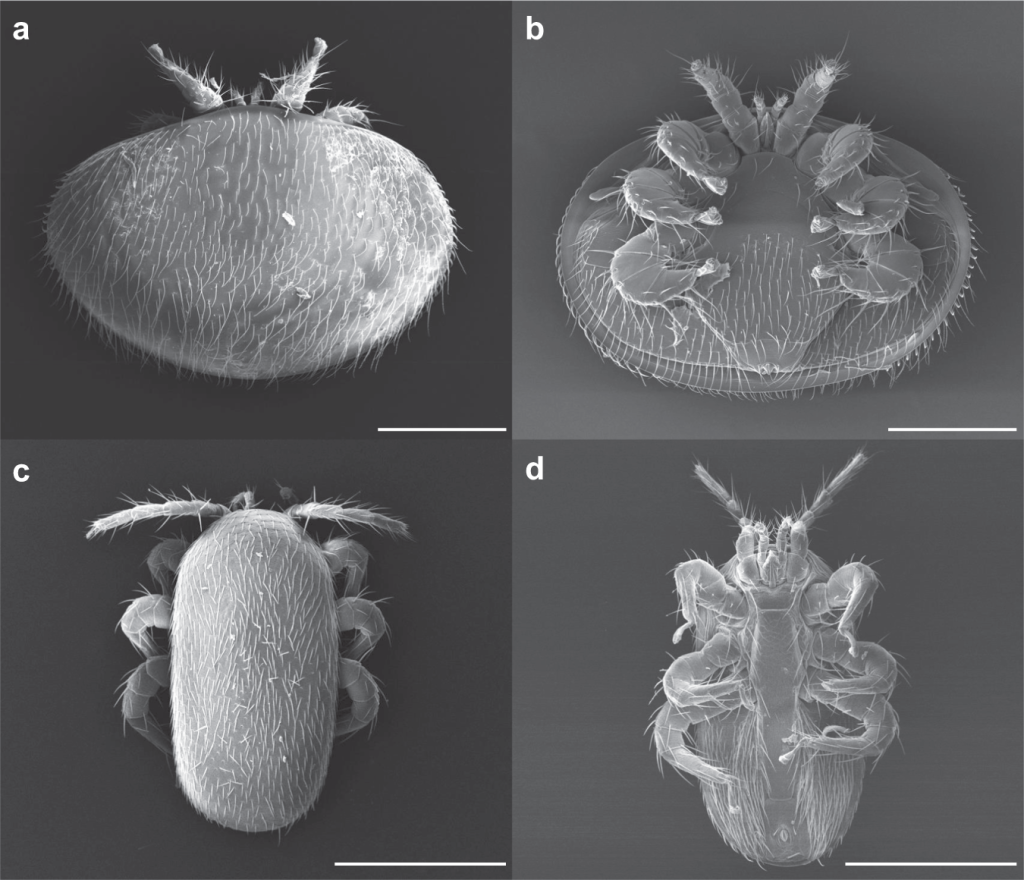The often heard refrain that Varroa is the primary cause of colony losses associated with CCD is simply not supported by the evidence.
So far in this series we have established that neonicotinoid pesticides are hyper-toxic to bees, exposure is occurring in the field to both wild and managed bee populations, the beekeeping industry is being negatively impacted, and there is a correlation between neonicotinoid use and pollinator decline. The question that arises is “How can this be, given the stringent regulatory environment that exists in the United States?” It turns out that the U.S. EPA and USDA regulatory process regarding pesticides that is supposed to protect human and environmental health is fatally flawed and corrupted. The evidence suggests that the pesticide regulatory process in the U.S. is nothing more than an elaborate scheme to provide legal cover for toxic chemical manufacturers so they can avoid taking responsibility for the devastation their products create.
Scientifically Based Decision Making?

Thousands of pages of chemical industry documents obtained through lawsuits that had been stored for decades in a barn in Oregon make up the Poison Papers…an insiders view into collusion and fraud between the pesticide industry and government regulators. Photo Credit: Risa Scott/RF Scott Imagery
A common refrain from the pesticide industry and its apologists is that there is a sound scientifically based regulatory process that pesticides must go through before being approved and that concerns about pesticides like neonicotinoids are simply not warranted given the science. Others have classified calls for restrictions or bans on pesticides as knee-jerk reactions.
These arguments ignore the fact that most pesticides today are approved through Section 18 of the Federal Insecticide, Fungicide, and Rodenticide Act (FIFRA). Section 18 authorizes the EPA to allow an unregistered pesticide to be used for a limited time if an emergency exemption is requested. Emergency exemptions can be requested by state or federal agencies when a serious pest problem jeopardizes production of agricultural goods or public health but no pesticide is currently registered and effective for that situation. The Section 18 process bypasses the usual requirement to prove a compound safe prior to use and pushes off the requirement to provide study data until a later date, a date that often gets postponed over and over.
The revolving door between the pesticide industry and government agencies creates conflicts of interest where individuals with regulatory authority are unlikely to firmly apply to regulations and rules to their past and/or future employers. Add to this the fact that the Environmental Protection Agency rarely conducts its own studies on pesticides and instead relies on manufactures such as Syngenta or Bayer to do due diligence, and conflict of interest issues that regularly impact decisions on pesticides abound. When researchers focused on a single pesticide approval process (Atrazine), they found the U.S. EPA’s pesticide evaluation process is riddled with flaws, allowing industry way too much power and influence. (Boone 2014) What ends up happening is that the companies, who benefit from allowing these poisons on the market, design, fund, and conduct the toxicity studies. I find that the pesticide industry is involved in almost all the studies that suggest neonicotinoid pesticides are either not harmful to pollinators, or produce mixed results that are not clear, while almost all the studies that indicate a clear potential for harm are conducted by independent researchers with no ties to the industry. Coincidence? I suspect not.
EPA Censorship and Whistle Blower Suppression
To make matters worse EPA employees report that agency administrative officials actively suppress research results that cast a negative light upon pesticides. Numerous examples exist of US EPA, USDA-NRCS, and USDA-ARS whistle blowers who have spoken out only to be the targets of harassment, punishment, censorship and intimidation.
One example is Dr. Johnathan Lundgren a respected pesticide risk assessment expert who had worked for the USDA Agricultural Research Service (ARS) for over a decade until he unearthed the potential ill-effects that neonicotinoid pesticides and gene splicing pesticides (RNAi) have on pollinators and had the audacity to publish his research in peer reviewed journals. (Pecenka 2015, Lundgren 2013) Another paper Lundgren co-authored found that soybean seeds pretreated with thiamethoxam produces no yield benefits to farmers, who pay extra for the seeds and may even be hurting beneficial predators in soybean fields that farmers need to help them manage aphids naturally. (Seagraves and Lundgren 2012)
USDA and EPA administrators have ordered agency scientists to retract studies, water-down findings, or remove their name from authorship which is exactly what happened to Lundgren in a paper involving the unintended adverse consequences of genetically modified corn crops. (Fausti 2015) They may also be forced to endure long undefined delays in having potentially controversial papers approved for publication. Today the EPA routinely restricts the ability of its scientists to communicate with the public about their research, often delaying or denying media requests for information and interviews. Most recently, the Trump Administration’s EPA has moved to replace independent scientists on EPA advisory boards with chemical industry representatives. Rather than sound science, we get weak and poor science and hellish bureaucratic manipulation, censorship, and red tape.
Fake Science and Cover-ups
Even more disturbing, thousands of documents have been obtained through lawsuits against the pesticide industry and U.S. regulatory agencies that detail a long history of deceit and collusion between the chemical industry and the regulatory agencies that are supposed to be safeguarding human health and the environment. These documents exposing disturbing evidence about the dangers of industrial chemicals – and the practices of the companies that make them are part of a library of activists that have made these publicly available through a project called Poison Papers (www.poisonpapers.org/) and reported by The Intercept.
Documents describe experiments that Dow chemical contracted with a University of Pennsylvania dermatologist and conducted on prisoners in the 1960s to show the effects of TCDD, a particularly toxic contaminant found in 2,4,5-T, the herbicide that was part of the Agent Orange formulation used during the Vietnam War. Another document, from 1985, shows that Monsanto sold a chemical that was tainted with TCDD to the makers of Lysol, who, apparently unaware of its toxicity, used it for 23 years as an ingredient in their disinfectant spray. Yet another from 1990, details the EPA policy of allowing the use of hazardous waste as inert ingredients in pesticides and other products under certain circumstances. Never mind the fact that even normal inert ingredients found in end use pesticide formulations may be more toxic than the active ingredient, (Mullin 2011) and inert and adjuvant ingredients sometimes chemically combine synergistically with the active ingredient, or other components of the final formulation to produce a toxic effect that is greater than that produced by the active ingredient alone. (Stanneck 2012, Chen 2014) Imidicloprid has even been linked to synergistic effects with honey bee pathogens providing additional insights into how neonicotinoids may exert deleterious effects on social insects. (Sen 2015, Mondet 2009)
Then there are the alarming documents that show that in the 1980s the FDA discovered that a commercial lab called Industrial Bio-Test, that had been responsible for carrying out 35 – 40 percent of all the toxicology testing on food and pesticide registration in the USA, had been regularly falsifying the results. The EPA was forced to carry out a review of all the test data which Bio-Test Labs had provided related to pesticide registration, and discovered that: “80 percent of the data provided to them for chemical registration from IBT was non-existent, fraudulent, or invalid.” (Wilce 2017)
This implies that dozens and dozens of pesticides have been illegally registered using falsified or fraudulent test data. Papers even document a secret meeting that was held at a Howard Johnsons by EPA, the Canadian EPA and senior execs from the chemical industry – during which EPA officials determined it was “not in the public interest” that any of the illegally registered pesticide licenses be revoked.
It is hard to imagine clearer evidence of illegal licensing of pesticides in the United States – and many of those illegally licensed chemicals are still widely used not only in America, but also in Canada, the UK and Europe – since the false data used to gain the initial licenses in North America was largely reused when the same pesticides sought licensing in Europe.
We have seen leaked research that EPA used to initially approve a neonicotinoid pesticide as safe for bees, being so flawed that it was scientifically meaningless (Theobald, 2010; Gertsberg 2011) Then in 2015 the U.S. 9th Circuit Court of Appeals court overturned the EPA’s approval of Sulfoxaflor, one of a new sub-class of neonic pesticides that also act upon an insect’s nicotinic acetylcholine receptors and is sold under the tradenames Transform and Closer. The court found that the chemical was approved with “flawed and limited data” and that approval was not supported by “substantial evidence.” In 2016 the Dow AgroScience pesticide was re-approved by EPA under Section 18 authorization after they changed the label to require fewer crop uses and added some additional measures that are supposedly designed to protect honey bees.
More recently, a special report “Glyphosate and cancer: Buying Science” documents how industry and regulators responded to credible studies indicating that glyphosate containing products like Round Up are genotoxic (damaging to DNA) and probable carcinogens, with unsound science, undermined by serious conflicts of interest. (Burtscher-Schaden 2017) Researchers found that industry utilized (and regulators accepted) manipulations such as calculated omissions and the introduction of irrelevant data, that confused the picture while denying the scientific evidence of glyphosate’s harmful effects. Industry researchers claim to have used a “weight of evidence” approach that takes a holistic view of different lines of evidence to assess whether glyphosate is carcinogenic or not, when in reality, they avoided this approach. All the studies finding glyphosate safe were conducted by industry sponsored researchers or those with conflicts of interest. Meanwhile, these unpublished studies are kept hidden from the public and independent scientists on the grounds of proprietary information. Even expert regulatory agency reports on glyphosate safety were found to be compromised by conflicts of interest and collusion between the U.S. EPA and Monsanto.
Not all junk science gets a pass. Seriously questionable science has recently been exposed in a couple of 2017 papers co-authored by Sir Jeremy Greenwood, professor at the University of Saint Andrews in Scotland. Greenwood and his colleagues show that studies on the effects of neonicotinoids during normal agricultural use conducted by the pesticide industry were scientifically flawed in terms of statistical analysis and thus, all conclusions drawn from the studies are without foundation. (Bailey 2017, Schick 2017)
Neonic Alternatives: Better or Worse?
Promotors of pesticide use have been quick to point out that without the proliferation of the neonicotinoid family of systemic pesticides, farmers would still be using older generations of toxic chemicals to raise their crops, pesticides that are much more hazardous to humans. While this is accurate, it is not necessarily a bad thing. When farmers use pesticides that are known to be highly toxic and dangerous, they tend to be careful using them and only utilize them when necessary. Neonicotinoids while highly toxic to insects, are apparently not as toxic to people. This has created a false sense of safety leading farmers to be more likely to utilize this new chemistry prophylactically since the dangers of doing so, appear to be minimal to humans.
What About Sound Science?
We often hear reasonable sounding people calling for our response to pesticides to be based less on anecdotal evidence and emotional reactions and more on sound science. As noted above, the evidence strongly suggests that pesticide approvals are not based on sound science nor are they ever likely to be. As I’ve written previously on these pages, the task of toxicity testing is so complicated that realistically no chemical is going to ever be thoroughly tested for safety either for bees or humans, before being manufactured and marketed. (Conrad 2009) To do so we first would need to know which biological tissues or functions the chemical affects, in what ways, at what potencies, and whether vulnerable populations will be exposed to other chemicals that affect the same tissues or biological functions. Then we would have to test groups of chemicals in combinations at low and high doses, and several doses in between. We would then have to determine whether the biological organism being studied is impacted by this combination of chemicals at one particular stage of life or another.
Currently none of the EPA required testing takes into account the potential synergistic effects of the multiple compounds that already exist in the environment. For example, suppose we wanted to test the synergistic actions of just 1,000 toxic chemicals in unique combinations of five chemicals each. A little mathematics indicates that we would have to test over eight trillion groups of chemicals. Even if we could test the wildly optimistic number of a million combinations each year, it would take us over 8,000 years to finish the task. When we consider that presently there are tens of thousands of toxic chemicals in commercial channels and released into the environment each year, and bees have the potential to come into contact with a wide variety of them daily, we begin to understand the impossibility of such a task.
Since even a semi-thorough vetting of pesticides is not realistically possible, the best our pesticide governmental industrial complex has come up with is regular scientific falsification and manipulation kept hidden behind a regulatory wall that by all indications appears to be designed to prevent the truth from coming out. We end up using pesticides without anything close to a full understanding of the consequences, and end up ignoring, debating, litigating and suffering from the results while the pesticide industry makes billions in profits. I pray that I am not the only one that sees the insanity of this situation.
References:
Bailey, A., Greenwood, J.J.D. 2017 Effects of neonicotinoids on Bees: an invalid experiment. Ecotoxicology. 10.1007/s10646-017-1877-1.
Boone, M.D., Bishop, C.A., Boswell, L.A., Brodman, R.D., Burger, J., Davidson, C., Gochfeld, M., Hoverman, J.T., Neuman-Lee, L.A., Relyea, R.A., Rohr, J.R., Salice, C., Semlitsch, R.D., Sparling, D., Weir, S., 2014 Pesticide Regulation amid the Influence of Industry, BioScience, 64(10) 917–922, https://doi.org/10.1093/biosci/biu138
Burtscher-Schaden, H., Clausing, P., Robinson, C., 2017 Glyphosate and Cancer: Buying Science, How industry strategized (and regulators colluded) in an attempt to save the world’s most widely used herbicide from a ban. Global 2000.
Chen, H., et. al., 2014 Synergistic effect of imidacloprid combined with synergistic agents (Beichuang, Jiexiaoli) on Myzus persicae (Hemiptera: Aphididae), International Journal of Pest Management, pp 201-207 DOI:10.1080/09670874.2014.956355
Conrad, R., 2009 Colony Collapse Disorder: CCD-The Sign of Things to Come? Bee Culture June 2009 pp. 47-48
Fausti, S.W. 2015 The Causes and Unintended Consequences of a Paradigm Shift in Corn Production Practices, Environmental Science and Policy, 52:41-50
Gertsberg, D., 2011 Are systemic pesticides to blame for honeybee colony collapse? GMO Journal, accessed Nov. 15, 2017 http://gmo-journal.com/2011/10/25/are-systemic-pesticides-to-blame-for-honeybee-colony-collapse/
Lechenet, M., Dessaint, F., Py, G., Makowski, D., Munier-Jolain, N., 2017 Reducing pesticide use while preserving crop productivity and profitability on arable farms, Nature Plants 3, Article No. 17008, doi:10.1038/nplants.2017.8
Lechenet, M., Bretagnolle, V., Bockstaller, C., Boissinot, F., Petit, M.S., Petit, S., Munier-Jolain, N.M., 2014 Reconciling pesticide reduction with economic and environmental sustainability in arable farming. PLoS ONE 9, e97922
Lundgren, J.G., and Duan, J.J., 2013 RNAi-Based Insecticidal Crops: Potential Effects on Nontarget Species. BioScience 63(8):657-665
Mondet, F., 2009. Nosema and imidacloprid synergy affects immune-strength-related enzyme activity in the honey bee, Apis mellifera (Rapport de stage, Université Claude Bernard (Lyon 1), Villeurbanne, FRA). http://prodinra.inra.fr/record/36474
Mullin, C.A., et. al., 2011 A Primer on Pesticide Formulation ‘Inerts’ and honey bees, Proceedings of the American Bee Research conference, American Bee Journal, Vol. 151, No. 5 pp 507-518
Pecenka, J.R., Lundgren, J.G., 2015 Non-target effects of clothianidin on monarch butterflies, The Science of Nature, 102:19
Schick, R.S., Greenwood, J.J.D., Buckland, S.T., 2017 An experiment on the impact of a neonicotinoid pesticide on honeybees: the value of a formal analysis of the data, Environmental Sciences Europe, 29:4 https://doi.org/10.1186/s12302-016-0103-8
Seagraves, Michael; Lundgren, Jonathan 2012 Effects of Neonicotinoid Seed Treatments on soybean aphid and its natural enemies, Journal of Pest Science, 85(1):125-132
Sen, R., et. al., 2015 Molecular Signatures of Nicotinoid-Pathogen Synergy in the Termite Gut, PLoS One. 2015; 10(4): doi: 10.1371/journal.pone.0123391
Stanneck, D., et. al., The synergistic action of imidacloprid and flumethrin and their release kinetics from collar applied for ectoparasite control in dogs and cats, Parasites & Vectors, 5:73 BioMed Central, DOI: 10.1186/1756-3305-5-73
Theobald, T., 2010 Do we have a pesticide blowout? Bee Culture, Vol. 138 No. 7 pp 66-69
Wilce, R., 2017 “Poison Papers” Snapshot: HOJO Transcript Illustrates EPA Collusion With Chemical Industry, Independent Science News
Ross Conrad is the author of Natural Beekeeping: Organic Approaches To Modern Apiculture, 2nd Edition.










